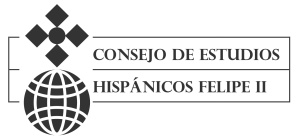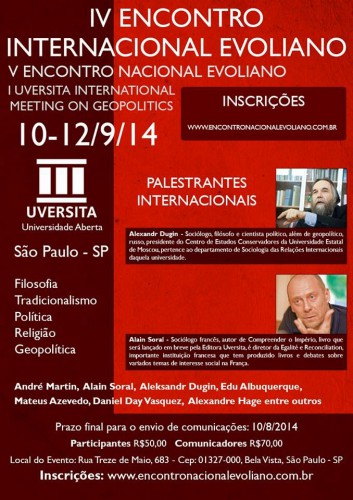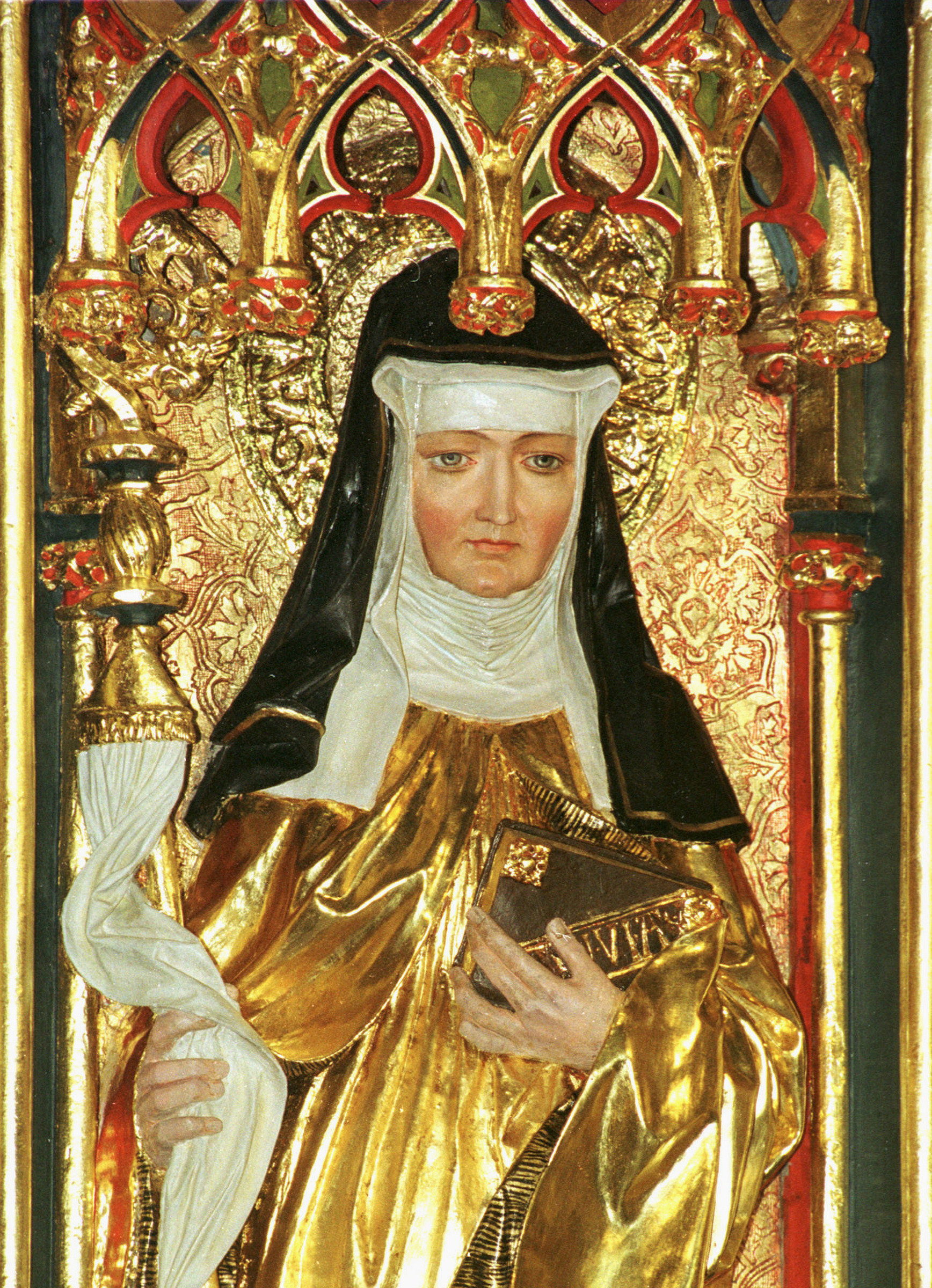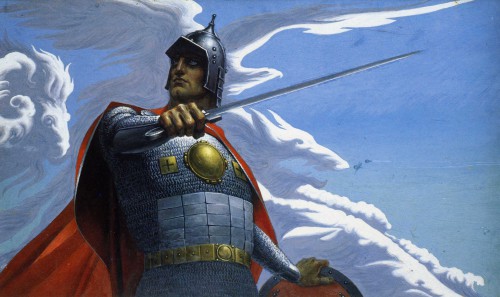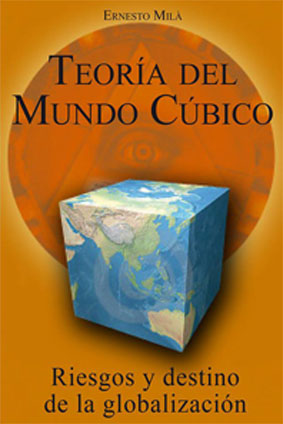La comparazione di natura filosofica tra Julius Evola e Giorgio F. G. Hegel, pensatori di natura sapienziale tanto lontani nel tempo e, quindi, apparentemente, così differenti, sia nel lessico da loro adottato che in relazione al contesto storico-culturale in cui hanno vissuto ed operato, impone rigorosamente la ricerca di ciò che realmente abbia significato per gli stessi la Cosa del pensiero, l’oggetto di cui e su cui hanno tematizzato, al di là delle modalità e cioè delle divergenze attraverso le quali, tutto ciò, loro malgrado, si è espresso. Quindi il lavoro deve essere caratterizzato da un approccio di natura ermeneutica, che privilegi non tanto la dimensione filologica quanto quella teoretica che, data la sua natura, abbia l’ambizione di varcare i limiti del tempo e delle stagioni culturali e, per dirla con il Kerenyi, entri in Idea nel cuore del Pensiero, che, nella sua intenzionalità, li ha guidati nel percorso dello Spirito. Quanto dedotto vuol significare che, come intorno ad Evola il discorso deve superare la “vulgata” del suo preteso “abbandono” della Filosofia, con la cosiddetta “chiusura” del periodo ad essa dedicato e l’ “apertura” nei confronti di ciò che tout court si è definito Tradizione, così per lo Hegel è necessario emendare radicalmente quanto certa critica pigra e conformista ha dedotto sulla sua pretesa modernità e sul concetto di razionale confuso e mistificato con quello cristiano e/o moderno di razionalismo individualistico e quindi astratto. Attesa la complessa vastità del tema, faremo in modo di esaminare e di indicare sinteticamente alcuni nodi essenziali comuni alla prospettiva sia di Evola che di Hegel, al fine di offrire quelli che, secondo noi, possono essere i percorsi di ricerca e di studio relativi alla quaestio sollevata.
****
L’autentica “svolta” spirituale esperita da Evola alla fine degli anni venti del Novecento non è consistita, a ben riflettere, in un “abbandono” della Filosofia e del suo orizzonte di ricerca e di visione, del suo oggetto di amore e dei suoi itinerari aristotelicamente dovuti, ma bensì in un lasciare al suo destino di impotenza gnoseologica e di inefficacia spirituale la Filosofia moderna o meglio il concetto moderno della stessa (che è poi quello cristiano…). La frase di Lagneau sulla Filosofia considerata una sorta di “…riflessione tesa a riconoscere la sua propria insufficienza e la necessità di un’azione assoluta che conduca al di là della medesima…” (Rev. de Met. et de Mor., Mars 1898, p. 127), posta da Evola come “incipit” ai Saggi sull’idealismo magico (1925), in concreto vuol significare che per realizzare il suo logos, la sua ragione, la Filosofia nel momento attuale, deve superare, andare al di là, effettuare un salto di natura ontologica per collocarsi nel luogo dello spirito che, e qui sta l’autenticità ermeneutica del percorso evoliano, è il luogo di pertinenza da sempre della Filosofia nel suo unico e autentico significato che è quello premoderno e cioè greco: percorso spirituale, di natura iniziatica, in un télos che è l’omòiosis theò! Ciò è quanto Evola ha compiuto nella sua azione realizzativa e di paidéia dei fondamenti della Scienza dello Spirito, sin dalla costituzione del Gruppo di UR, la cui natura, nel significato di essenza e quindi la sua virtus come finalità, è alquanto simile a ciò che è stata l’Accademia Platonica dagli inizi sino a Proclo: palestra rigorosa del Sapere che è ascesi filosofico-rituale e non cerimoniale, la cui finalità, pertanto, è l’assimilazione al Divino. Tutto ciò cosa ha a che fare con il concetto e la prassi moderni della Filosofia? Cosa ha a che fare la vera ricerca del sapere che è essere con, al di là di rare eccezioni, un sedicente “insegnamento” di natura sterilmente nozionistica e stupidamente specialistica, da “dotti ignoranti”, come si esprime lo stesso Evola, vera caricatura mistificante di quanto l’uomo cerca sin dall’alba del suo spirito? Nulla, desolatamente nulla! Tale concetto moderno e quindi degradato di ciò che Aristotele afferma essere l’atteggiamento più naturale per l’uomo, cosa ha in comune con la definizione espressa dallo Hegel sull’essere la Filosofia “… la considerazione esoterica di Dio…”? (Enc. Scienze Fil.) e con il principio di Platone che il filosofo è solo colui il quale vede il Tutto, confermato dallo stesso Hegel quando insegna che “il Vero è l’Intero”?Assolutamente niente, ma le affermazioni hegeliane come quella di Platone hanno tutto in comune invece con quanto Evola enuncia in quella autentica e maestosa professione di fede platonica che è l’inizio di Rivolta contro il mondo moderno, quando edifica tutta la sua opera sul Sapere intorno alle due nature del Mondo, la naturale e la sovrannaturale, come medesime dimensioni e dello Spirito e della Phýsis, tanto che, platonicamente, in Evola la Fisica è Teologia in quanto il Mondo “è pieno di Dei!” E la Teologia in quanto Teosofia, Sapere intorno al Divino, è la stessa Logica che ha per oggetto il Nous come intelletto che è il Dio dormiente nell’uomo e quindi nel cosmo: l’intero Logos evoliano ha per fine, in guisa esclusiva, la rimozione attiva di quel “quindi” in quanto impedimento effettuale all’oscuramento dello Spirito; è, pertanto, opera di realizzazione del Sé, perseguita ed indicata come Via iniziatico-solare, di natura platonicoapollinea e non nientificazione orfico-dionisiaca dell’Io che, avendo la natura spirituale del pathèin e non del mathéin (Aristotele, Perì philosophias, fr. 15), non è conoscenza dell’autentica essenza dello Spirito in quanto realtà Divina trascendentemente immanente che è come dire la realtà dell’Individuo Assoluto, vera sublimazione dell’Io; “…la filosofia ha lo scopo di riconoscere la verità, di conoscere Dio, poiché Dio è la verità assoluta…”, afferma Hegel nelle Lezioni sulla filosofia della religione; (vol. II). Allora è d’uopo affermare, senza alcun timore, che sia in Evola che in Hegel, riappare, in piena modernità, il senso e il significato greco della Filosofia, strumento per il conseguimento del Risveglio, che è la rinascita, dopo la caduta-oblio, in quanto anàmnesi di ciò che si è e lo si è sempre stati pur non avendone scienza (ignoranza come avidya), quindi riconquista di un Sapere che coincide con l’Essere in senso ontologico. Talché la Filosofia, nel suo vero ed unico significato, che è quello platonico-iniziatico (Lettera VII), nocciolo esoterico della stessa esperienza spirituale dei Misteri (Fedone, 69c-d), è quindi Scienza Sacra in senso eminente e autentica Tradizione, avente ad “oggetto” solo ed esclusivamente il Divino, che è la Verità in quanto essenza e dell’uomo e del Mondo, come Cosmo; è pertanto Sapere per pochi, è gnosi, è Teosofia, conoscenza del Dio che si rivela, nella completezza del percorso rituale-filosofico, come theopoìesis (deificatio) (Platone, Teeteto, 176 b 1; Repubblica, 613 a b; Timeo, 90 d; Leggi, 716 c s; Plotino, Enneadi, I, 2, 6, 25; Proclo, Elementi di Teologia, 127; 112, 31; Corpus Hermeticum, I, 26; 16, 12), significando ciò il rammemorare la consapevolezza quale Sapere, aldilà ed oltre sia il Mito che il Simbolo (livelli di conoscenza sapientemente riconosciuti, sia da Evola che da Hegel, inefficaci ai fini della Scienza, in relazione allo stato intellettivo-noetico puro che è l’apollineo), che il Dio è “oggetto” da superare, da negare, andando oltre il dualismo soggetto-oggetto per “osare” essere Lui! Tale identificazione, sia in Hegel che in Evola, è la stessa autoconoscenza del Sé quale Assoluto nella sua natura solare, in totale estraneità, pertanto, ad ogni confusione panteistica e ad ogni vedantino acosmismo spirituale. In tale guisa, pertanto, anche se mediante linguaggi differenti e in contesti storico-culturali lontani, Evola ed Hegel dicono il Medesimo e la Filosofia, quindi, nella loro opera non è più quell’insulsa propaggine della teologia dogmatica (cristiana), né quella serva timida delle cosiddette scienze moderne, cioè della concezione parziale, riduttiva e quindi irreale, in quanto galileiana, della natura, ormai desacralizzata e ridotta ad oggetto di calcolo matematico e ciò al di là della autentica rivoluzione epistemologica operata nel XX secolo dalla fisica dei quanti e dalla sua meccanica che, invece, ritornando ad una visione platonica del reale (vedi Heisenberg ed il suo concetto della chòra platonica…) non fa che confermare, tutto sommato, il sapere sia di Evola che di Hegel. La Filosofia torna così ad essere ciò che non può non essere, consistendo, secondo Aristotele, nel Destino che gli Dei hanno affidato all’uomo; non “fede”, non “credenza”, ma Sapere che è esposizione del Mondo in quanto Pensiero puro, sono “le idee di Dio prima della “creazione” del mondo e di ogni oggetto finito” (Hegel); è speculazione (da speculum) dove il Pensiero si specchia nel Mondo, in senso oggettivo e vede se stesso come Idea e quindi Unità (Hegel); è la realtà dell’Oro ermetico, che è la Cosa più vicina e nel contempo più lontana (Evola), è la certezza sensibile, è il concreto esistente che è da sempre Spirito, solo che non lo sa, (medesimo concetto esprime Plotino in riferimento all’esperienza del “toccare” il Dio [Enneadi, VI, 9, 7]); l’Oro si trova infatti nella più oscura Tenebra o Feccia (Ermetismo) da cui l’uomo fugge, proprio perché non sa che l’Opera deve iniziare da quello stato come riconquista eroica che corporizza lo Spirito e spiritualizza il corpo, ed è la grande fatica del concetto (Hegel). Tutto ciò Evola lo rende manifesto nella sua opera La Tradizione ermetica che è la summa circolare del viaggio iniziatico (dal Corpo come impietramento del principio Fuoco allo stesso Corpo però rinato come rosso Cinabro, solfuro di mercurio) simile alla circolarità triadica della Scienza della Logica di Hegel: il Logos qui non è una conoscenza astratta e quindi profana cioè falsa ma, come per gli antichi maestri neoplatonici, è l’apertura dell’occhio dello Spirito sul Mondo come è, e quindi come appare, ciò significando che essenza ed esistenza sono il Medesimo che è l’Essere, nel “momento”, che non è temporale, ma logico cioè ontologico, in quanto riguarda la natura profonda dell’uomo, in cui lo stesso, acquisito il medesimo livello di essere-conoscenza, è nella capacità di vedere, attesa la natura epoptica della filosofia evoliana. La veneranda Tradizione Platonica, a cui appartengono sia Hegel che Evola, è il filone aureo che da Plotino, Proclo ed Eckhart sino a Nicola da Cusa, Giorgio Gemisto Pletone, Marsilio Ficino, Benedetto Spinoza e Jacob Boehme, non è altro che Introduzione alla Scienza dell’ Io, come spirito Universale, come Atto puro, proprio nel significato dell’autoctisi gentiliana che è poi il causa sui di Spinoza, che, nel Sapere Assoluto, che è filosofico, realizza il Sapere del Dio, dove quel “del” è tanto il Sapere che ha il Dio come “oggetto” che il Sapere che appartiene al Dio stesso.
****
Il situarsi sia di Evola che di Hegel nella Tradizione Platonica, ci conduce in immediato nella evidenza relativa ad una fondamentale verità presente nel loro orizzonte sapienziale: la polare identità tra Pensiero ed Essere, intesi in senso cosmico e quindi oggettivo e non certo nel significato individuale e soggettivo che è come dire cartesiano e quindi moderno; identità che è da costruire, con fatica eroica, in quanto cammino catartico (Fenomenologia dello Spirito in Hegel; Rivolta contro il mondo moderno in Evola) per la riacquisita coscienza che è poi Inizio dell’altro percorso, avente il Fine della identificazione plotiniana, che è il mònos pros mònon, come mutamento della propria natura (metànoia), principio noetico ormai desto, non più e non mai “esterno” all’Io ma Sé autentico che è al contempo (e da sempre) il Lògos del mondo (Tradizione Ermetica in Evola; Scienza della Logica in Hegel). Il Sapere (Nous) che coincide anzi è l’Essere (Phýsis) è ciò che, in guisa aurorale, afferma la sapienza indoeuropea, ad iniziare da Parmenide e dai Veda (Atman è Brahman). Il Mistero di tale verità è l’Inesprimibile del Pensiero che si riconosce nel Tutto come i Molti che è visto nell’Istante- exàiphnes come Uno (Platone, Parmenide, 156, c) ed è il fondamento della conoscenza comune sia ad Evola che ad Hegel: ad uno stadio di consapevolezza, che è un “momento” (“temporale” ma che non si svolge nel tempo…) della coscienza e quindi un essere della stessa, in senso ontologico, corrisponde uno stadio o livello di conoscenza-sapere che è il vivere-essere lo stadio o livello equivalente e corrispondente nel Mondo; tale processo spirituale in Evola è da situare in guisa manifesta dopo la catarsi dialettica che certamente coincide con la fase del suo pensiero preparatoria della teoresi dell’Idealismo magico che è il salto nella gnosi platonica. La realtà dello spirito che, come qui appare evidente, è circolare, e va dall’io al mondo e dal mondo all’io vuol significare che si conosce ciò che si è e si è ciò che si conosce e, quindi, si conosce ciò che si diviene, equivalendo ciò al ritorno anamnestico verso l’Inizio, dove si è sempre stati, nella natura in cui si è sempre consistiti ma della quale si è presa coscienza, solo dopo aver perfezionato l’Opera filosofica. Evola ed Hegel, nel solco del platonismo, ci inducono pertanto a meditare sulla dimensione dello Spirito, nel “momento” in cui il Pensiero, pensando il suo “passato” (l’Anima, il suo sonno…), si riconosce tale ed il Mondo, gli Dei (l’oggetto) appare quello che è sempre stato, cioè il Pensato, la dimensione dell’Anima, il movimento, la Vita, la dialettica (essere-non essere; vita-morte; dolore-gioia…). Evola lo afferma in tutta la sua opera: se si è forma, si vede la forma, che è sempre, ma anche colui che “ora” la vede lo è sempre stato solo che lo aveva dimenticato. Secondo Evola ed Hegel, ovviamente, non è questione di ideologie o di modi di vedere il mondo, cioè di stati soggettivi, poiché di soggettivo, nel senso di personale o individuale-psicologistico, qui non è dato parlare, ma di stati molteplici, differentemente gerarchici, dell’Essere (sia in senso microcosmico che macrocosmico, cioè quello che ignorantemente chiamiamo ancora tanto “soggetto” quanto “oggetto”)!
Hegel, infatti, nella Scienza della Logica, quando parla di meccanicismo, chimismo, organicismo, non sta enunciando determinate visioni del mondo o punti di vista, ma sta dicendo che una natura, in senso ontologico, meccanicistica conosce solo il meccanicismo o meglio il livello o “momento” meccanicistico del mondo e quindi sta trattando filosoficamente degli stati della coscienza, come livelli del pensiero a cui corrispondono gli stessi stati della natura poiché questa è il medesimo Pensiero uscito da sè (proodòs plotiniana); essi sono pertanto il percorso del Sapere come Idea a cui corrispondono stati equivalenti della natura poiché la Verità cioè il Divino è l’Intero cioè l’Uno (e questo non è lo stesso principio di corrispondenza magica tra uomo e Metalli-Mondo cioè Astro-Nume-Metallo tanto in senso microcosmico quanto macrocosmico che è il fondamento della Tradizione sia nella forma Ermetica che in quella Platonica?). Evola dice il medesimo quando afferma che Inferno e Paradiso, esotericamente, sono stati della coscienza nei quali e attraverso i quali si conoscono le tenebre infernali o le luminosità celesti che sono livelli o dimensioni dell’Essere dello stesso mondo o dimensioni del Tutto, il chiuso Athanòr, che una natura corrispondente andrà a conoscere o tenebroso come assenza di Luce o luminoso. Pertanto un essere che è, come spiritualità autentica, o il primo o il secondo, può conoscere solo o uno o l’altro, credendo, nel momento ingenuo (mitico, secondo Evola), intellettivo-astratto (direbbe Hegel), del percorso di conoscenza, che si tratti di un “altro” mondo a sé medesimo opposto e definito dualisticamente non-Io. Gli Dei non esistono a priori per fede… se non si conoscono e si conoscono solo esperimentando e quindi essendo lo stato corrispondente. Se in Evola tutto ciò è definito identificazione iniziatico-solare in cui è manifesto che Io sono Te, riconoscendo pertanto l’irrealtà dello stato religioso-devozionale, in Hegel è il percorso dello Spirito che supera l’oggettivazione del Sé (Dio), come Altro e, con la semplificazione filosofica ed il suo Sapere apicale, è l’Assoluto che conosce se stesso, “accadendo” come evento logico, cioè fuori dal tempo, “dopo” lo stato-essere spirituale rappresentativo che è il religioso-dualistico. È la realizzazione della conoscenza che il soggetto è l’oggetto, il Pensiero come Atto puro cosmico è l’Essere che è il Dio, e si ritorna ad Aristotele, al Pensiero di Pensiero, al Pensiero che pensa Se stesso ed è poi l’Autarca di Evola! In sostanza ed in termini filosofici, cioè concettuali, è il Risveglio buddistico (vedi La dottrina del risveglio) che in Evola è la realizzazione della vera natura dell’uomo, rendendo manifesta quella occulta o incosciente (Aristotele, Etica nicomachea, 1177b 33) idea di origine platonica (Timeo, 90c) che è l’athanatìzein di Proclo, cioè il rendersi immortali in quanto si assume piena consapevolezza e quindi Sapere di esserlo sempre stati. Corollario di tale Tradizione gnosica è, in Evola, La Scienza dell’Io che si riconosce, quale atto magico di anamnesi, come Idea eterna del Sé: “…Io alla seconda persona, alter ego celeste dell’uomo: è ancora l’uomo ma nello stesso tempo non è più solo l’uomo…” (Henry Corbin) ed è l’affermazione che la conoscenza del Dio è l’autoconoscenza del Dio come Divino nell’uomo e dell’uomo: il Dio si conosce e si vede nell’uomo, come l’uomo, nel doversi conoscere, conosce Se medesimo quale il Divino stesso. È il sapere di natura apollinea, di cui enigmaticamente parla Platone nell’Alcibiade Maggiore (133 c)…!
*****
In riferimento a tale Sapere Pavel Alexandrovic Florenski ne Le radici universali dell’Idealismo rileva la natura primordiale dello stesso e trae la conclusione che il Platonismo è la Conoscenza originaria presente nelle Tradizioni religiose e sapienziali di tutti i popoli del Mondo, cioè a dire, nella sue essenza metafisica, la Tradizione Unica di tutte le Civiltà, nella forma tanto mitico-religiosa nei primordi delle stesse, quanto magica ed unitivo-sapienziale al tramonto del ciclo.
Pertanto il Sapere, la Gnosi, di cui non solo parlano o scrivono sia Evola che Hegel, ma che sono e realizzano come mutamento della natura, essendo lo stesso Sapere, è in virtù di “qualcosa” di arcaico, di ancestrale, di originario, di non classificabile nelle e con le comuni categorie dello Spirito non solo di questo tempo ma di ogni tempo; “qualcosa” che è una realtà vivente, un fuoco che brucia nella continuità della loro vita, nel loro athanòr, come fiamma che consuma tutti i residui, le scorie, le impurità tanto che “magicamente” loro appaiono quello che sono in quanto Essere come identità di essenza ed esistenza; dai contemporanei sono infatti veduti come autentici maghi, nel significato arcaico e quindi vero del termine, chiarito, quasi nello stesso periodo di tempo, sia da Florenski che da Evola in questi termini: natura attiva dello Spirito nei confronti delle Forze e dei Numi cosmici e tanto intensa da apparire quasi naturale, come innata identificazione con gli stessi, mediante riconoscimento anamnestico!
Allora il Sapere tradizionale, che equivale a dire metafisico e che stiamo tentando di delineare per brevi cenni, è di natura magico-sacrale!
E non può essere diversamente, atteso il fatto che Evola non è lo scrittore, lo studioso o l’erudito, figlio di una sclerotica civilizzazione ma è frutto di una Kultur che, proprio nel senso spengleriano, è qualcosa di vivente che emerge maestosa e luminosa, vasta e complessa nella sua cosmica valenza, da tutta la sua opera che è principalmente ed in guisa essenziale, la sua stessa presenza e la sua vita come Simbolo e Mito. Non si può negare la presenza della Luce di questa forza magico-sacrale, quasi sciamanica, in uomini, in Sapienti Solfurei, autentiche trasparenze della doxa omerica, cioè della gloria del Pensiero, inteso in senso Vivente e Divino, in tutti coloro i quali, con linguaggi diversi ed in tempi storico-culturali oltremodo differenti, hanno osato dire, vivere ed essere Verità, autenticamente rivoluzionarie e destabilizzanti per tutte le Chiese, i Dogmi e le Istituzioni dominanti, quasi come Vie della mano destra di ogni epoca, Verità che hanno sempre incusso paura, tremore e financo terrore nell’uomo, inducendo e provocando mistificazione del loro Dire, calunnie sul loro Fare, negazione del loro Essere e tentativi, peraltro vani, di oscuramento della Verità da loro eroicamente difesa. È la vicenda, non solo di un Evola, criminalizzato e mistificato o di un Hegel, incompreso e pertanto trasferito tout court, nonostante la geniale intuizione di un Feuerbach sull’essere il sapiente Svevo “…il Proclo tedesco…”, nel positivismo e nel laicismo immanentista o nel soggettivismo postcartesiano, ma è la storia umana anche di Eckhart, di Giorgio Gemisto Pletone, di Boehme, di Spinoza, cioè è il destino comune, la risposta, la reazione di chi, in buona sostanza, rifiuta, ne ha paura e non comprende insegnamenti come questi di Plotino: “…Il compito non è essere virtuosi o buoni ma essere Dei!…”; “…Non devo andare io agli Dei ma gli Dei venire a me…!”; che equivalgono a ciò che dice Eckhart nei Sermoni: “…Dio ed io siamo una cosa sola…!”; a quanto afferma Hegel: “…Si crede usualmente che l’Assoluto debba trovarsi molto al di là mentre è invece proprio ciò che è del tutto presente e che, in quanto pensanti, anche senza averne espressamente coscienza, portiamo sempre con noi…!” o a ciò che rivela Boehme nel De Signatura rerum: “…tra la Nascita Eterna, la Redenzione dalla Caduta e la scoperta della Pietra dei Filosofi non c’è alcuna differenza…!”.
Si tratta, quindi, di un Sapere primordiale, è la Tradizione iniziatica regale, è la originaria via indoeuropea agli Dei, nel senso spirituale e realizzativo del Risveglio del Re che dorme nel profondo dell’anima, ed è, innanzitutto ed essenzialmente il Rito filosofico quotidiano e costante onde realizzare il Katèchon che, difendendo il principio superiore della coscienza e quello animico ad esso orientato, costituisca invalicabili barriere nei confronti delle potenze tenebrose provenienti dal basso; al fine di “ricostruire” eroicamente la natura autentica dell’uomo: la libertà dello Spirito, nella divinificazione che è l’Eghemonicòn stoico, di cui parla Evola, la liberazione dell’uomo dalle catene invisibili con cui egli stesso si è reso prigioniero di sé medesimo! Tale Conoscenza suprema che è di una semplicità fanciullesca (gli antichi Ermetisti parlano di “gioco di bambini”) mai come nella fase presente, di palese e drammatica decadenza spirituale da fine di un ciclo di civiltà, come rivela Aristotele (Metafisica, XII, 8,1074a, 38-b 14), è di straordinaria ed inattuale attualità, poiché, essendo la Conoscenza della maturità avanzata di un epoca, proprio come precisa Aristotele nel passo su citato, è l’ultima àncora di salvezza sia per coloro che vogliono percorrere tale unica ed ineludibile Via dello Spirito, per tornare ad essere, come precisa Evola, quanto meno e come base di partenza, uomini, sia per la conservazione e la trasmissione dei Fondamenti della stessa da “tràdere” cioè consegnare a coloro i quali saranno i protagonisti del ciclo successivo: non altro concetto ha, infatti, espresso lo stesso Hegel quando ha definito la filosofia il Sapere del meriggio che nasce quando s’invola la nottola di Minerva!
Ci chiediamo, alla fine di questa nostra riflessione, la ragione per cui la Tradizione magico-arcaica, la Sapienza antica, il Platonismo come eterno Idealismo, il Logos di Evola come quello di tutti i Sapienti che nei secoli e nei millenni hanno rivelato sempre e soltanto la medesima Cosa, avente ad “oggetto” il Pensiero pensante che è già e da sempre Pensiero pensato e cioè il Divino come Mondo che ritorna ciclicamente e liberamente, in quanto sapientemente, in se stesso, appaiono tanto irrimediabilmente inattuali da essere invece così indiscutibilmente attuali; la risposta a tale domanda risiede nella natura protervamente materialista e quindi antiumana di questa epoca in cui dello Spirito nulla si sa e si deve sapere, dell’Anima non se ne deve parlare più, affidando il suo semantema residuo ed umbratile a forme di stregonerie e ciarlatanerie definitesi, molto appropriatamente, “psicoanalisi” (vedi J. Evola, L’infezione psicanalista, Quaderni della Fondazione Evola, Napoli 2012); il corpo è ignorato in quanto “pensato” come un assemblaggio di pezzi meccanici da riparare e, nel caso, da sostituire; epoca in cui, infine, ci si è fatti convincere che l’uomo non sia e non debba essere altro che un “tubo digerente” avente solo una finalità: il disciplinato e silenzioso consumo planetario, in quanto “naturalmente” privo di idee, sentimenti e passioni, che pericolosamente abbiano o conservino qualcosa che ricordi l’umano; nessun Discorso, religioso o filosofico contemporaneo, che può pur apparire radicale e liberatorio lo può mai essere, in verità e nella dimensione universale, così come lo è manifestamente e dall’eternità la Luce della Tradizione, per la semplice ragione che tutti i “discorsi” che non appartengono alla sua Verità, appartengono alla Modernità, come categoria dello Spirito; e non si può nemmeno tentare di superare l’effetto coniugandolo con la sua causa!
Solo la Scienza dello Spirito, l’atto supremo ineludibile di Rivolta contro il mondo moderno, può aprire gli occhi, prima dell’anima e poi dello Spirito, dell’uomo della presente età, sì da fargli riacquistare la stazione eretta che, come insegna Platone, gli consente di guardare il Cielo e quindi gli Dei!
Di una sola cosa, comunque, siamo certi e serenamente consapevoli e quindi convinti: il potere unico della Chiesa dogmatica tecno-finanziaria del capitalismo mondialista, apparentemente trionfante al crepuscolo del presente ciclo, ha di fronte, alle spalle ed intorno a sé medesimo, una sola ed invincibile nonché semplice e luminosa Verità, espressa da Julius Evola nei termini seguenti: “…Tutto si potrà fare sull’uomo e nell’uomo ma mai strappare dal fondo del suo animo la presenza del Divino!…”.
Giandomenico Casalino
BIBLIOGRAFIA ESSENZIALE
Albanese L., La tradizione platonica, Roma 1993.
Albert K., Sul concetto di filosofia in Platone, Milano 1991.
Beierwaltes W., Platonismo e idealismo, Bologna 1987.
Boutroux E., Jacob Boehme e l’origine dell’idealismo tedesco, Milano 2006.
Casalino G., La prospettiva di Hegel, Lecce 2005.
Casalino G., L’origine. Contributi per la filosofia della spiritualità
indoeuropea,Genova 2009.
Casalino G., La conoscenza suprema. Essere la concretezza luminosa
dell’Idea, Genova 2012.
Casalino G., Sul fondamento. Pensare l’Assoluto come Risultato, Genova 2014.
Carbonara C., Hegel platonico e teologo. Quaderni contemporanei, 6, 1971.
Di Vona P., Metafisica e politica in Evola, Padova 2000, pp. 55 ss.
Evola J., (a cura di), Introduzione alla Magia, Roma 1969, volume I, pp. 56 ss.; 364 ss.
Evola J., La tradizione ermetica, Roma 1998.
Hadot P., Esercizi spirituali e filosofia antica, Torino 1988.
Hegel G.G.F., Scienza della Logica, Bari 2001.
Hegel G.G.F., Fenomenologia dello spirito, Firenze 1960.
Heidegger M., “Hegel e i greci” in Idem, Segnavia, Milano 1987.
Kramer H., Platone e ifondamenti della metafisica, Milano 1989, pp. 285 ss.
Lugarini L., Hegel e la tradizione arcaica, Il Pensiero, voI. XXXII, 1992.
Magee G.A., Hegel e la Tradizione Ermetica, Roma 2013.
Plotino, Enneadi, VI, 9,40.
Platone, Lettera VII
Platone, Alcibiade Maggiore.
Ponsetto A., L’anima religiosa della filosofia, Lecce 2000.
Proclo, Teologia Platonica.
Ruggenini M., Il Dio assente. La filosofia è l’esperienza del Divino, Milano 1997.
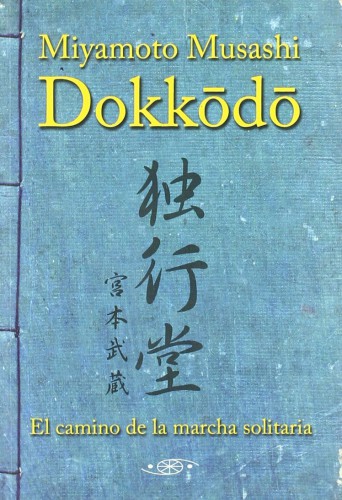 2. Do not seek pleasure for its own sake (身にたのしみをたくます)
2. Do not seek pleasure for its own sake (身にたのしみをたくます)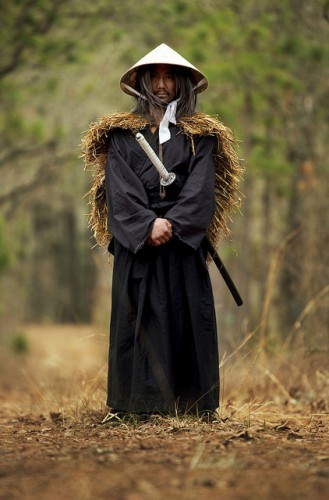 9. Complaining and bearing grudges are appropriate neither for oneself or others (自他共にうらみかこつ心なし)
9. Complaining and bearing grudges are appropriate neither for oneself or others (自他共にうらみかこつ心なし)


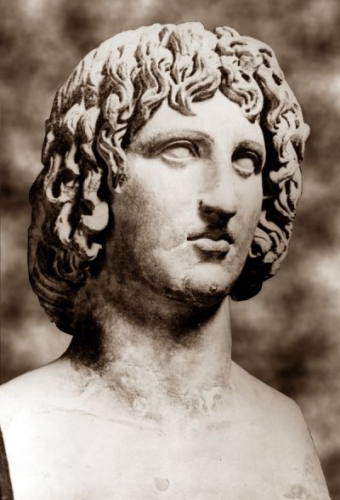

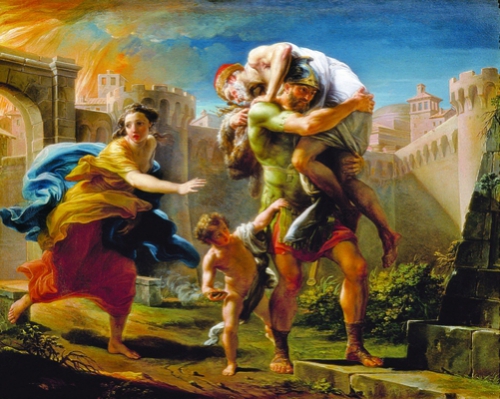
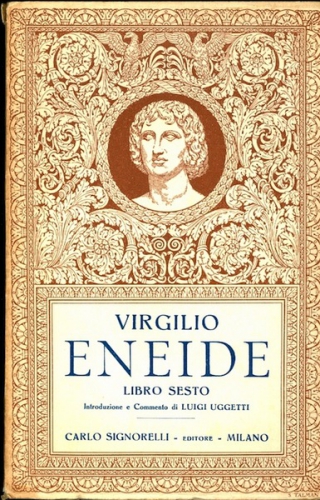

 del.icio.us
del.icio.us
 Digg
Digg

 Ce geste symbolique et sacré revêt surtout une dimension politique : c’est aussi un acte de désobéissance. Cet engagement solennel n’est pas sans rappeler les contrats d’ikki : les ikki sont ces révoltes populaires conduites pour réparer une injustice commise par les autorités ou un seigneur, insurrections parfois organisées par des guerriers pour se faire justice eux-mêmes ; ces derniers étant trop fiers pour laisser le règlement de leurs différends entre les mains des pouvoirs publics, fussent-ils le gouvernement du Shôgun (lire sur ce sujet :
Ce geste symbolique et sacré revêt surtout une dimension politique : c’est aussi un acte de désobéissance. Cet engagement solennel n’est pas sans rappeler les contrats d’ikki : les ikki sont ces révoltes populaires conduites pour réparer une injustice commise par les autorités ou un seigneur, insurrections parfois organisées par des guerriers pour se faire justice eux-mêmes ; ces derniers étant trop fiers pour laisser le règlement de leurs différends entre les mains des pouvoirs publics, fussent-ils le gouvernement du Shôgun (lire sur ce sujet :  Les témoignages historiques dépeignent différemment les motivations de ces samouraïs : le seigneur Asano n’était guère apprécié par ses serviteurs, et ce serait 58 guerriers (sur les 308 du clan) qui auraient prêté serment, non pas par simple esprit de vengeance, mais par réprobation du traitement injuste réservé à Asano par le Shôgun. Ce dernier aurait dû sanctionner les deux parties, d’autant qu’il y eut un précédent survenu en 1684. Un guerrier, selon l’historien Nakayama Mikio, en aurait blessé un autre en ce même lieu. Le premier aurait été tué sur le champ par un maître-officier du gouvernement et le second exilé. Enfin, seuls les criminels étaient exécutés ou contraints de se suicider à l’extérieur de leur maison. Les conditions du suicide d’Asano ont été considérées comme un acte infamant. C’est pour ces motifs que les rônins ont souhaité laver l’affront fait à leur maître et à leur maison.
Les témoignages historiques dépeignent différemment les motivations de ces samouraïs : le seigneur Asano n’était guère apprécié par ses serviteurs, et ce serait 58 guerriers (sur les 308 du clan) qui auraient prêté serment, non pas par simple esprit de vengeance, mais par réprobation du traitement injuste réservé à Asano par le Shôgun. Ce dernier aurait dû sanctionner les deux parties, d’autant qu’il y eut un précédent survenu en 1684. Un guerrier, selon l’historien Nakayama Mikio, en aurait blessé un autre en ce même lieu. Le premier aurait été tué sur le champ par un maître-officier du gouvernement et le second exilé. Enfin, seuls les criminels étaient exécutés ou contraints de se suicider à l’extérieur de leur maison. Les conditions du suicide d’Asano ont été considérées comme un acte infamant. C’est pour ces motifs que les rônins ont souhaité laver l’affront fait à leur maître et à leur maison.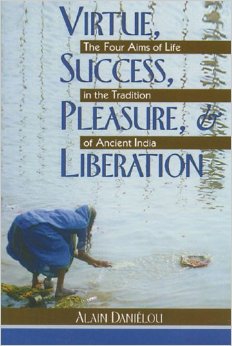 One hears a great deal today about “multiculturalism,” and the multicultural society. We (i.e., we Americans) are told that ours is a multicultural society. But, curiously, multiculturalism is also spoken of as a goal. What this reveals is that multiculturalism is not simply the recognition and affirmation of the fact that the U.S.A. is made up of different people from different cultural backgrounds. Instead, multiculturalism is an ideology which is predicated on cultural relativism. Its proponents want to convince people that (a) all cultures are equally good, rich, interesting, and wholesome, and that (b) a multicultural society can exist in which no one culture is dominant. The first idea is absurd, the second is impossible.
One hears a great deal today about “multiculturalism,” and the multicultural society. We (i.e., we Americans) are told that ours is a multicultural society. But, curiously, multiculturalism is also spoken of as a goal. What this reveals is that multiculturalism is not simply the recognition and affirmation of the fact that the U.S.A. is made up of different people from different cultural backgrounds. Instead, multiculturalism is an ideology which is predicated on cultural relativism. Its proponents want to convince people that (a) all cultures are equally good, rich, interesting, and wholesome, and that (b) a multicultural society can exist in which no one culture is dominant. The first idea is absurd, the second is impossible.
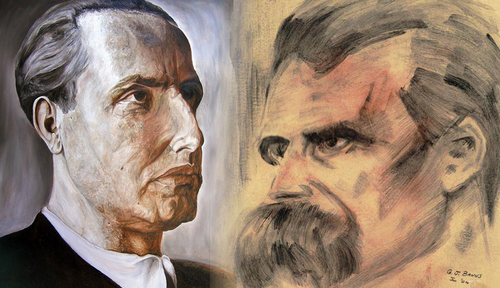


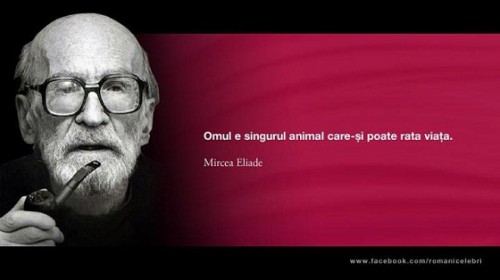
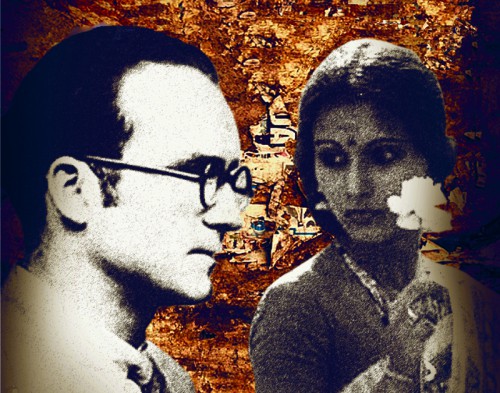
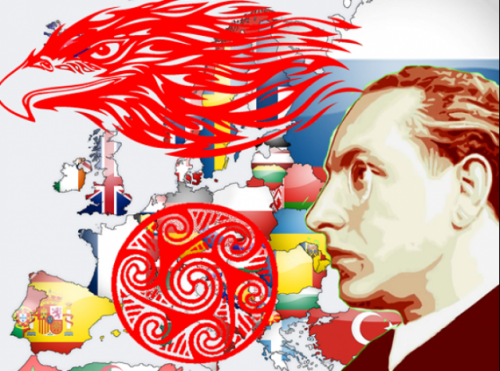

 In the days when I used to post on white nationalist websites one of the most recurring themes that people would argue about is the declining levels of Aryans vis a vis other races. I argued then as I argue now ratios are not relevant. Lower animals and races of men will breed at a faster rate than higher species or races. Often the reason for this is the higher mortality rate in such species and races. This fact may also be observed amongst the soci-economic classes which are a bastardised and commercialised version of the ancient traditional Aryan caste system (the two are not to be confused or even compared!). Individuals of lesser education (not merely formal education but general awareness and ability) tend to breed without restraint and with no consideration as to whether they (or the tax payer) can afford such indiscriminate coupling!
In the days when I used to post on white nationalist websites one of the most recurring themes that people would argue about is the declining levels of Aryans vis a vis other races. I argued then as I argue now ratios are not relevant. Lower animals and races of men will breed at a faster rate than higher species or races. Often the reason for this is the higher mortality rate in such species and races. This fact may also be observed amongst the soci-economic classes which are a bastardised and commercialised version of the ancient traditional Aryan caste system (the two are not to be confused or even compared!). Individuals of lesser education (not merely formal education but general awareness and ability) tend to breed without restraint and with no consideration as to whether they (or the tax payer) can afford such indiscriminate coupling!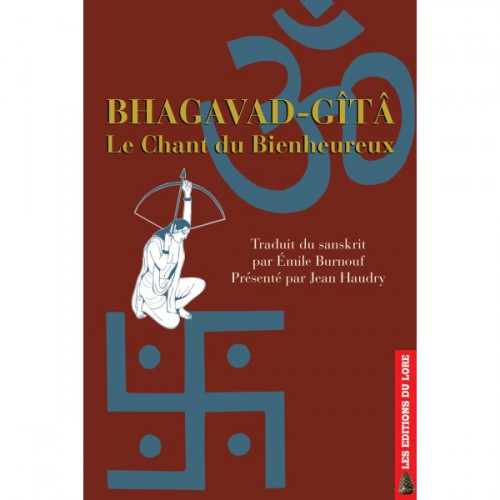

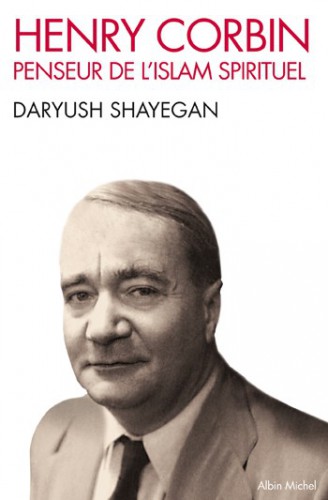 “Subrayar y enfatizar las conexiones, las líneas de fuerza en las que se sustenta la trama del concepto espiritual de Eurasia, desde Irlanda a Japón” (1): a esta preocupación de P. Masson Oursel, que se inspira en un programa esbozado en 1923 en la Philosophie comparée y proseguido en 1948 en La Philosophie en Orient (2), Henry Corbin (1903-1978) le atribuye un “valor especial” (3). Trascendiendo el nivel de las determinaciones geográficas e históricas, el concepto de Eurasia viene a constituir “la metáfora de la unidad espiritual y cultural que recompondrá al final de la era cristiana en vista de la superación de los resultados de ésta” (4). Estas son, al menos, las conclusiones de un estudioso que en la obra corbiniana ha descubierto las indicaciones idóneas para fundar: “aquella gran operación de hermenéutica espiritual comparada, que es la búsqueda de una filosofía – o mejor dicho: de una sabiduría – eurasiática” (5). En otras palabras, la misma categoría geofísica de “Eurasia” no es más que la proyección de una realidad geosófica vinculada a la Unidad originaria, puesto que “Eurasia” es, en la percepción interior, en el paisaje del alma o Xvarnah (“Luz de Gloria”, en el léxico mazdeo), la Cognitio Angelorum, la operación autológica del Anthropos Téleios, o incluso, por último, la unidad entre el Lumen Naturae y la Lumen Gloriae. De aquí la posibilidad de acercar a Eurasia con el conocimiento imaginal de la Tierra como un Ángel” (6).
“Subrayar y enfatizar las conexiones, las líneas de fuerza en las que se sustenta la trama del concepto espiritual de Eurasia, desde Irlanda a Japón” (1): a esta preocupación de P. Masson Oursel, que se inspira en un programa esbozado en 1923 en la Philosophie comparée y proseguido en 1948 en La Philosophie en Orient (2), Henry Corbin (1903-1978) le atribuye un “valor especial” (3). Trascendiendo el nivel de las determinaciones geográficas e históricas, el concepto de Eurasia viene a constituir “la metáfora de la unidad espiritual y cultural que recompondrá al final de la era cristiana en vista de la superación de los resultados de ésta” (4). Estas son, al menos, las conclusiones de un estudioso que en la obra corbiniana ha descubierto las indicaciones idóneas para fundar: “aquella gran operación de hermenéutica espiritual comparada, que es la búsqueda de una filosofía – o mejor dicho: de una sabiduría – eurasiática” (5). En otras palabras, la misma categoría geofísica de “Eurasia” no es más que la proyección de una realidad geosófica vinculada a la Unidad originaria, puesto que “Eurasia” es, en la percepción interior, en el paisaje del alma o Xvarnah (“Luz de Gloria”, en el léxico mazdeo), la Cognitio Angelorum, la operación autológica del Anthropos Téleios, o incluso, por último, la unidad entre el Lumen Naturae y la Lumen Gloriae. De aquí la posibilidad de acercar a Eurasia con el conocimiento imaginal de la Tierra como un Ángel” (6).